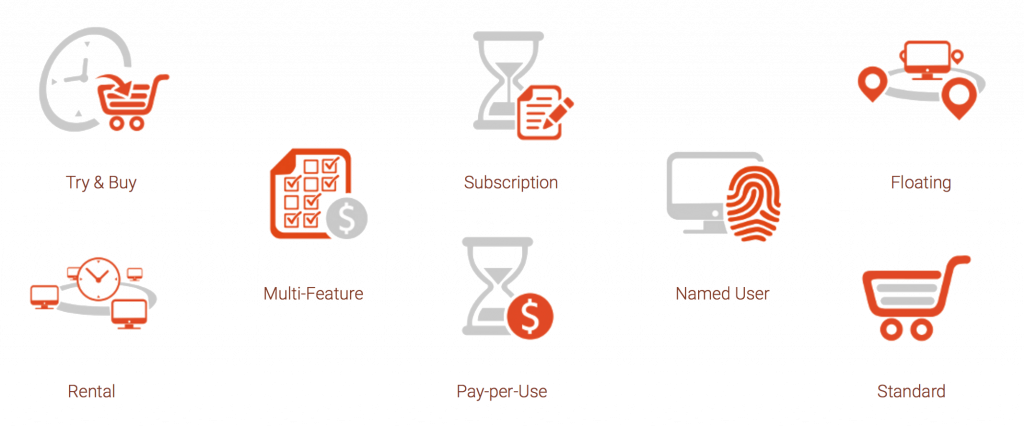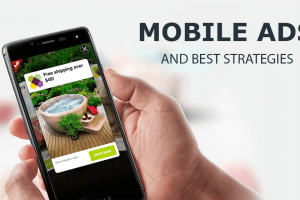Content Attributes
For software developers, the software is one of their business’s most valuable assets and needs protection with a license. Otherwise, they might as well be giving it away for free.
A good license lets end-users access the software while the software publisher retains ownership. End users must accept a licensing agreement and get a “key” or permission to use the tool.
Various “keys” exist in the form of licensing models to unlock the software. Some licenses can be simple, like a perpetual license while others like the metered license can be quite complex to understand.
This guide looks at the various types of common and advanced licensing models. Let’s dive in!
Common Licensing Software Models

Perpetual License
This is the traditional method whereby a user buys a license on a one-time basis and gains lifetime usage of the software. Depending on the agreement, you can download updates or receive technical support for a period after which you’ll start paying.
The one-time fee doesn’t compensate for maintenance, so additional maintenance fees might be incurred later.
Floating License
In a floating license, a certain number of licenses is shared by many users, usually on a first-come-first-served basis.
The license is shared and not exclusive, so if a user is using it and another person wants to access it, they have to wait till the current user signs out.
When the user signs out or the license period expires, the license is returned to the license pool and becomes available to other users.
Subscription License
The end-user gets a license for a recurring period, such as a monthly or yearly subscription which is good if you can’t afford the upfront payment. Users decide which subscription works best for them and they can upgrade or download it if the need arises.
A subscription license such as Powerapps licensing is suitable for today’s fast-paced society because software may not run on older devices, and the only way to be sure is to test it through a subscription
Advanced Software License Models
Advanced software license models are many and include the following:
- Support and Maintenance License – this one provides software updates and fixes to a software product purchased under the perpetual license.
- Feature License – Controls which features of software the end-user can’t use.
- Trial License – The user is allowed to test with the hope that they will acquire the actual license.
- Project-Based License – This one supports collaboration between people working on multiple projects.
- Academic License – Gives access to companies that provide educational apps to schools.
- Whitelist License – This license is ideal for product testing where select users access a product through a defined whitelist.
- Metered License – This license limits access to a software’s features.
- Device License – Unlike the anchored license, a device license is usable on multiple devices.
- Company-Fixed Duration License – A combination of a floating and a fixed-duration license.
- On-Demand Corporate License – This license combines aspects of the other licenses to offer the publisher more flexibility.
- Offline Use License – Used in mining and other sectors where internet connection might not always be accessible.
How Do You Pick the Right License Model?
Selecting the right model requires careful consideration because an overly permissive license loses copyright protection while a restrictive one will not find users.
You can pick the right model by following a certain approach:
Are you aiming for flexibility?
If you want flexibility, perpetual licenses may not be suitable since they require many future updates. Subscription license models work with open-source licenses and are therefore flexible.
What do you intend to use it for?
If the software supports app development, a restrictive license is not applicable, but if it‘s for a business management program or a game, restrictions will apply well.
If you’re still undecided on which license model to pick, this will help you:
- Personal use – Public Domain and Lesser General Public licenses.
- Small businesses – Metered, aggregate User and Trial licenses.
- Corporates – Perpetual, Subscription, and Consumptive licenses.
Be Sure To Choose the Right Software Licensing Model
Users can access the software using various licensing models which are either common or advanced. Common license models include perpetual, floating, and subscription licenses.
Perpetual licenses involve a one-time payment that guarantees a lifetime of software use, while subscription licenses require renewal after a certain period. There are also many other advanced license models, such as metered, project-based, and trial licenses.
Choosing the right model requires you to know whether you want flexibility or are comfortable with a one-time payment.
You should also consider the function. Are you using it for purposes that require restrictions or do you want a more permissive model? Answering such questions will help you pick the right license model.



